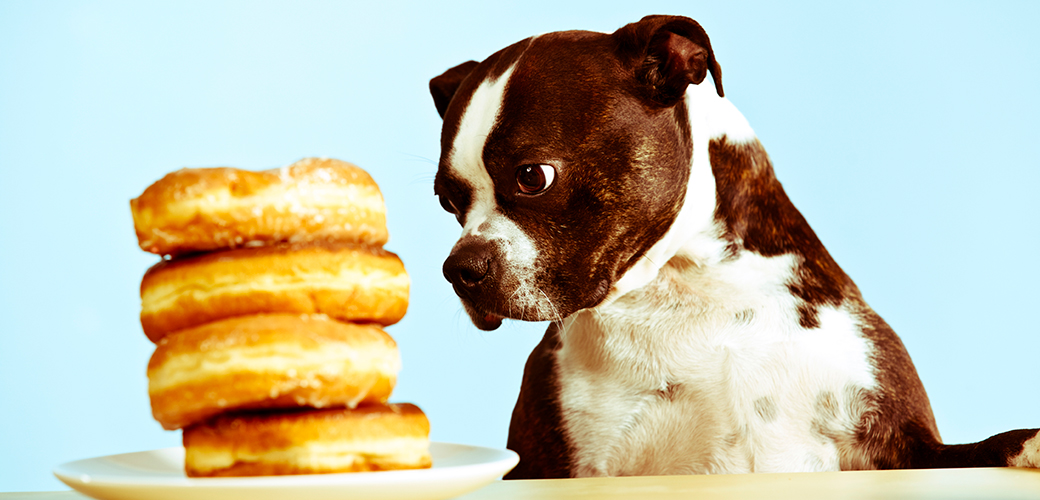Some of us are used to sharing our food with our pets, but we should pay attention to how much and what type of food can be harmful.
While some dog breeds can weigh as much as a human’s, most are only a fraction of our height. A small amount for us can be huge for a dog, depending on its size. Toxic doses are often measured in units, usually milligrams or milliliters, per kilogram of body weight.
Foods that are safe for one species may not necessarily be safe for another because of the differences in metabolism between species. For example, a cat’s liver has a limited ability to metabolize various compounds and this makes it more susceptible to certain types of toxicity.
Toxic compounds can be harmful in small or large amounts, so it’s safe to assume that some foods are not safe for pets.
The precautions include measures to make the home “animal proof”. Even airtight plastic containers aren’t safe for a large dog determined to get the treats, so it’s best to keep harmful foods out of reach or in a locked cabinet for smarter pets.
Here is a list of ten foods that you should not feed or allow your pet to have access to:
- Chocolate : One ounce of milk chocolate per pound of body weight is considered a good rule of thumb for a potentially fatal dose and it takes little to cause harm. The theobromine, caffeine, and other methylxanthines in these products are the primary toxins. Methylxanthine compounds can cause high heart rates, arrhythmias, and heavy ingestion can cause seizures and death. Ingestion of small amounts may cause digestive disturbances such as vomiting and diarrhea. A good rule of thumb to follow is that the darker the chocolate, the more toxic it is. Baker’s chocolate contains the highest amounts of these toxic compounds, followed by chocolate truffles, dark chocolate and then milk chocolate. White chocolate contains only trace amounts of theobromine and caffeine. Tea and coffee should be kept out of the reach of dogs and cats as they also contain methylxanthines, theobromine, and caffeine.
- Xylitol: Today, products like chewing gum, pharmaceutical suspensions, candy, baked goods, peanut butter, and packaged sweeteners containing xylitol are found in grocery stores. All products containing xylitol are toxic to dogs (toxicity has not been reported in cats and ferrets). Exposure causes hypoglycemic attack, liver damage or even liver failure and potentially death. The onset of signs of toxicity can be observed within an hour or after 12 hours, depending on the food ingested. Signs of toxicity include vomiting, depression, changes in blood cells and blood parameters, jaundice, and bleeding disorders. At high doses,
- Bread dough : Yeast breads can be harmful to pets if ingested while the dough is rising on the counter. The disorders are caused by the distension of the stomach if the dough is still rising and the effects of yeast and yeast byproducts like ethanol (alcohol). If the alcohol level in the blood becomes high enough, intensive care may be required to prevent death, and sometimes surgery may be needed to remove a large mass of paste that threatens to cause a tear in the stomach.
- Alcoholic beverages (ethanol) : Alcoholic beverages should be kept out of reach to reduce the risk of toxicity (ethanol) caused by alcohol, beer and wine. An ounce of alcohol in a drink might not harm a healthy human adult, but if a small Chihuahua grabs a mixed drink, the dose per kilogram for a small dog’s body weight could be important, as previously mentioned. Alcohol toxicity can lead to behavioral and mobility problems, depression, coma and death.
- Raw bone, meat and seafood: Food poisoning organisms are very common in human and animal products. Common agents that we hear about on the news include Salmonella, E. Coli, Campylobacter, and Listeria. Uncooked food can contain a large amount of bacteria and it is easy for these bacteria to contaminate your hands and kitchen surfaces like cutting boards and knives, so good kitchen hygiene should be followed to prevent the transfer. between food, people and pets. Raw and cooked bones can fracture and cause damage to the digestive tract as well as obstruction or even rupture of the digestive tract. Chicken bones are particularly problematic because they tend to break into sharp pieces. Contamination of jerky treats, pig ears, calf hooves and raw skin treats is also very common and recalls should be monitored before purchasing dried animal products. A list of food recalls can be viewed

- at:https://www.fda.gov/AnimalVeterinary/SafetyHealth/RecallsWithdrawals/default.htm (English only)
- Macadamia nuts : These nuts are often referred to as Australian nuts or Queensland nuts and dogs exposed to them show signs of the nervous system (tremors, depression, depression, stiffness, high body temperature) that can last for one or two days.
- Grapes : Even in small amounts, it is known that ingesting grapes can cause kidney failure within three days of ingestion in dogs, cats and ferrets. Toxicity can occur even when ingested in a pastry or baked product. The active ingredient, mechanism of action and dose of toxicity are still not well understood. It seems that as few as three to five grapes can be problematic for some animals but not for others and therefore it is best to avoid ingestion entirely.
- Onions, Garlic (Allium family), Leeks, and Chives : These foods, whether dried or fresh, contain the compounds allicin and ajoene which convert into harmful sulfur compounds. Heating or cooking does not alter their toxicity. The toxic signs are associated with the bursting of red blood cells, which causes anemia and the inability to carry enough oxygen to the tissues. Cats are two to three times more sensitive than other species to this toxicity.
- Rhubarb leaves and star fruit : These two foods contain calcium oxalate and can cause kidney failure in acute or chronic ingestion. Animals are discouraged from ingestion because of their bitter taste. Clinical signs include drooling, vomiting, diarrhea, reduced appetite, and increased water consumption and urination.
- Salt : Ingesting large amounts of salt can cause vomiting, seizures, and even death, due to a rise in body temperature and so it is important to keep salty chips and other foods high in salt out of the reach of pets. Animals will become excessively thirsty, and free access to drinking water after ingestion of salt can have fatal consequences.

